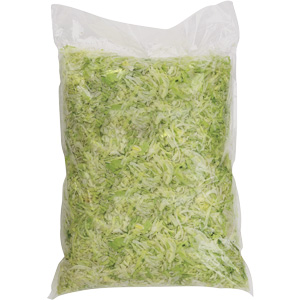I’m a fan of the U.S. Food and Drug Administration (FDA) Model Food Code process. Every two years interested folks get together as part of the Conference for Food Protection to discuss the minutiae surrounding food service food safety rules(what temperatures need to be changed and practices augmented). The combatants come armed with new science, references, data and duke it out for a couple of days. At the end of the meeting delegates from each state vote on proposed rule changes and a list gets sent to the FDA.
Sometimes the FDA agrees, sometimes not, but the whole process is out in the open – and it allows for emerging risks to be added when new evidence (outbreaks and research) is generated.
Pathogens, once attached to the surface or internalized into cut surfaces of leafy greens, are only marginally affected by sanitizers (their use is not considered an adequate control strategy for pathogens) leaving time/temperature as the most effective control. This is supported by published data. Luo and colleagues (2010) demonstrated ten-fold growth over a 4-day period after inoculating cut lettuce with E. coli O157:H7 at 53.6F (12C). Luo and colleagues also showed that if stored at 41F (5C), E. coli O157:H7 populations do not grow and experience slight decline. Lee and Baek (2008) showed that spinach inoculated with E. coli O157:H7 and stored at 44.6F (7C) would support pathogen growth This finding, coupled with other data, was modeled by Danyluk and Schaffner (2011) and supports assumptions that cut leafy greens that are temperature abused will support the growth of E. coli O157:H7 and that the pathogen’s populations may increase by as much as ten-fold each day (at optimum temperatures).
In the 2008 version of the Conference, following over 20 multi-state outbreaks between 1998 and 2008, cut leafy greens were suggested as an addition to the list of foods requiring time and temperature control for safety (joining cut melons, sprouts and tomatoes from the world of produce). The rationale is available here (Issue 2008-III-022).
FDA agreed with the recommendations of the Conference and the change appeared in the 2009 code (and is already followed in three states New Hampshire, Mississippi and Delaware — as well as Puerto Rico).
Some folks, cited in today’s The Packer, have argued that the rule is unenforceable.
A push for North Carolina to adopt the federal food code could result in receivers of fresh-cut leafy greens having the bark in a regulation that some say will have virtually no bite.
[Larry] Michael [Food Protection Program Head NC Division of Public Health] said the code leaves it up to the receivers to enforce the temperature requirement. He also said that unless a receiver already has a very low inspection score, the two points off would likely not effect their operations.
Some growers are opposed to the requirement, saying is an unnecessary burden, especially if the greens are grown and cut in close proximity to receivers. Michael said the state division has asked food safety researchers at the University of North Carolina (N.C. State -ben) to look into the issue and make a recommendation.
Tim Greene, director of marketing and sales for Hollar & Greene Produce Inc., Boone, N.C., said he doesn’t believe adoption of the FDA food code would make food any safer. Greene doubts the state’s ability to enforce the provisions of the code and said buyers already require appropriate temperatures (except the rule applies to food service, not retail –ben).
“Wal-Mart already requires 42 degrees,” Greene said. “(The FDA code) won’t make any difference at all unless they enforce it, and they don’t have any way to do that.”
Endpoint cooking temperatures of meats are pretty unenforceable as well (inspectors have to be there at the exact right time), but that’s not a good reason to avoid having risk-reduction rules based on the best available science.
